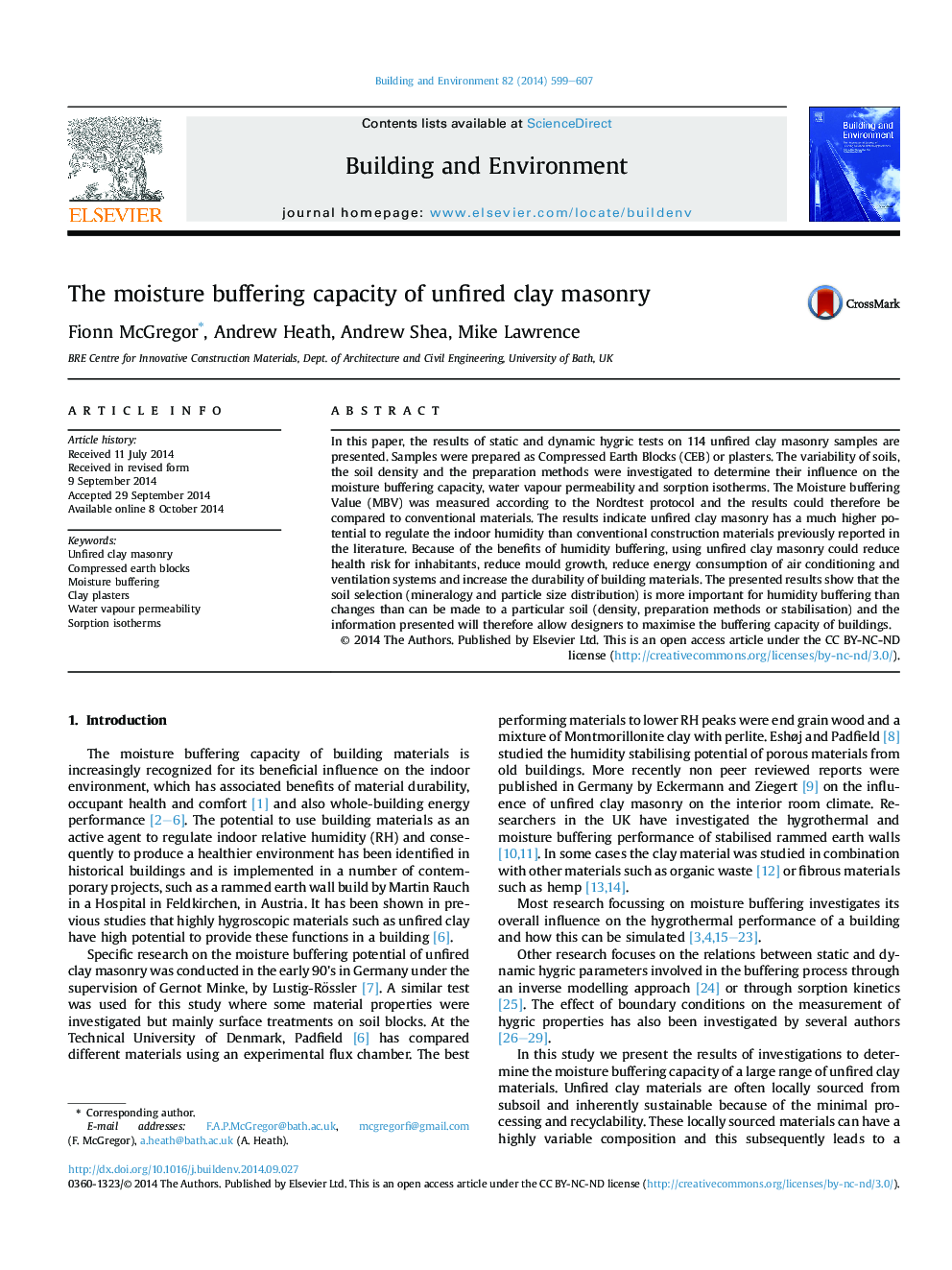| کد مقاله | کد نشریه | سال انتشار | مقاله انگلیسی | نسخه تمام متن |
|---|---|---|---|---|
| 6700436 | 502544 | 2014 | 9 صفحه PDF | دانلود رایگان |
عنوان انگلیسی مقاله ISI
The moisture buffering capacity of unfired clay masonry
ترجمه فارسی عنوان
ظرفیت بافر رطوبت از سنگ تراشی نزولی
دانلود مقاله + سفارش ترجمه
دانلود مقاله ISI انگلیسی
رایگان برای ایرانیان
کلمات کلیدی
سنگ تراشی بی سابقه بلوک های فشرده، رطوبت بافر، گچ کاری خاک رس نفوذپذیری بخار آب، ایزوترمهای جذب،
موضوعات مرتبط
مهندسی و علوم پایه
مهندسی انرژی
انرژی های تجدید پذیر، توسعه پایدار و محیط زیست
چکیده انگلیسی
In this paper, the results of static and dynamic hygric tests on 114 unfired clay masonry samples are presented. Samples were prepared as Compressed Earth Blocks (CEB) or plasters. The variability of soils, the soil density and the preparation methods were investigated to determine their influence on the moisture buffering capacity, water vapour permeability and sorption isotherms. The Moisture buffering Value (MBV) was measured according to the Nordtest protocol and the results could therefore be compared to conventional materials. The results indicate unfired clay masonry has a much higher potential to regulate the indoor humidity than conventional construction materials previously reported in the literature. Because of the benefits of humidity buffering, using unfired clay masonry could reduce health risk for inhabitants, reduce mould growth, reduce energy consumption of air conditioning and ventilation systems and increase the durability of building materials. The presented results show that the soil selection (mineralogy and particle size distribution) is more important for humidity buffering than changes than can be made to a particular soil (density, preparation methods or stabilisation) and the information presented will therefore allow designers to maximise the buffering capacity of buildings.
ناشر
Database: Elsevier - ScienceDirect (ساینس دایرکت)
Journal: Building and Environment - Volume 82, December 2014, Pages 599-607
Journal: Building and Environment - Volume 82, December 2014, Pages 599-607
نویسندگان
Fionn McGregor, Andrew Heath, Andrew Shea, Mike Lawrence,
